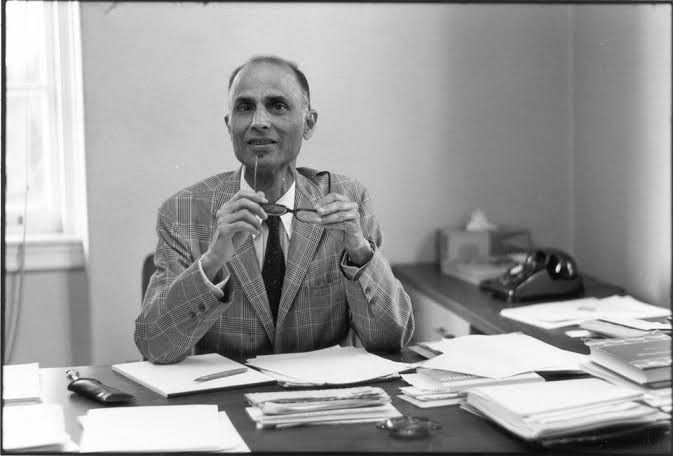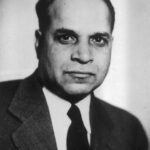Harish-Chandra: 10 Remarkable Insights into His Mathematical Genius
Harish-Chandra was an extraordinary Indian-American mathematician and physicist whose groundbreaking work in representation theory and harmonic analysis shaped modern mathematics. His legacy continues to inspire researchers in algebra, Lie groups, and theoretical physics. This article explores his life, achievements, daily life impact, and lasting significance.
Harish-Chandra was an influential Indian-American mathematician and physicist, particularly known for his significant contributions to the field of representation theory and harmonic analysis. His work is particularly associated with the theory of Lie groups and Lie algebras, which are mathematical structures that are important in various areas of physics, including quantum mechanics and particle physics.
One of his most notable achievements was his work on the representation theory of semisimple Lie groups, where he made groundbreaking advancements in the study of their representations. He introduced concepts like the “Harish-Chandra homomorphism” and the “Harish-Chandra module,” which have had a lasting impact on the field.
Harish-Chandra also contributed to the development of the theory of automorphic forms, which are functions that arise in number theory and algebraic geometry, often used to describe symmetries in mathematical objects.
He was born on October 11, 1923, in Kanpur, India, and moved to the United States in the early 1940s for his graduate studies. Harish-Chandra worked at several prestigious institutions, including the Institute for Advanced Study in Princeton, and was highly regarded by mathematicians for both his original ideas and his ability to solve complex mathematical problems.
His work remains fundamental to modern mathematical physics, and he has influenced generations of mathematicians and physicists.
Early Life and Education
Born on October 11, 1923, in Kanpur, India, Harish-Chandra Mehrotra showed an early aptitude for mathematics and science. He completed his education at the University of Allahabad before moving to the University of Cambridge, where he worked under the guidance of Paul Dirac, one of the greatest physicists of the 20th century.
Key Contributions and Achievements
Harish-Chandra made significant contributions to various areas of mathematics, particularly in representation theory and Lie groups. Some of his major contributions include:
- Infinite-Dimensional Representations: His work on the representation theory of semisimple Lie groups remains foundational in modern mathematics.
- Harish-Chandra’s Schwartz Space: He introduced key mathematical tools that advanced harmonic analysis.
- Plancherel Theorem for p-Adic Groups: His research in harmonic analysis of p-adic groups provided crucial insights into number theory.
- Harish-Chandra Modules: A concept named after him, central to representation theory and quantum mechanics.
- Mathematical Physics: His early work in quantum mechanics and Dirac’s theory laid the groundwork for his later achievements in pure mathematics.
Daily Life Impact and Importance to Society
Harish-Chandra’s contributions continue to shape various scientific fields:
- Cryptography and Coding Theory: His work influences modern encryption techniques.
- Quantum Mechanics and Theoretical Physics: The mathematical structures he developed are fundamental to physics.
- Advanced Computing Algorithms: His theories contribute to complex problem-solving in artificial intelligence and data science.
- Education and Research: His legacy inspires students and researchers worldwide.
Historical Significance and Observance
Harish-Chandra’s work is honored in multiple ways:
- Harish-Chandra Research Institute (HRI): One of India’s premier research institutes is named after him.
- Recognition by the American Mathematical Society: His contributions are regularly acknowledged in global mathematics conferences.
- Fields Medal Influence: Though he never won the Fields Medal, his research laid the groundwork for many later winners.
Lesser-Known Facts
- He initially pursued physics but later shifted to pure mathematics.
- He was deeply influenced by Paul Dirac, under whom he studied at Cambridge.
- His meticulous nature led him to rewrite his proofs multiple times before publication.
- He received the Cole Prize in Algebra from the American Mathematical Society.
- Despite his global recognition, he remained humble and dedicated to his work.
FAQs
1. What was Harish-Chandra famous for?
He was famous for his contributions to representation theory and Lie groups, which revolutionized modern algebra and physics.
2. When did Harish-Chandra pass away?
He passed away on October 16, 1983, in Princeton, New Jersey, USA.
3. What is Harish-Chandra’s most significant contribution?
His work on the representation theory of semisimple Lie groups remains one of his most influential achievements.
4. Did Harish-Chandra receive any major awards?
He received the Cole Prize in Algebra, one of the most prestigious awards in mathematics.
5. How is Harish-Chandra’s legacy preserved?
His research continues to inspire mathematicians, and institutions like HRI in India honor his contributions.
Why Legacy Still Matters
It’s work laid the foundation for several modern mathematical theories and scientific advancements. His contributions to representation theory, harmonic analysis, and quantum mechanics continue to influence cutting-edge research.
Final Thoughts
He was not just a mathematician; he was a visionary whose ideas continue to shape modern science and mathematics. His contributions stand as a testament to the power of intellect, dedication, and passion for knowledge.










